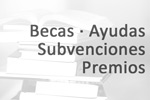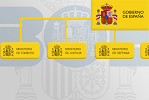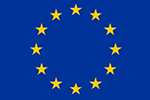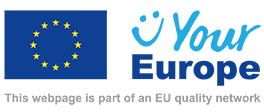Product standards, technical specifications and certification
Content
Standards and technical specifications
Standards
What is a standard?
A standard is a technical specification adopted by a recognised standardisation organisation in accordance with the provisions of Regulation (EU) No 1025/2012 ![]() on European standardisation.
on European standardisation.
What are harmonised standards?
They are standards which a European standardisation organisation has adopted on the basis of a mandate issued by the Commission. Harmonised standards are published in the Official Journal of the European Union.
They are governed by Regulation (EU) No 1025/2012.![]()
When a product is assessed for conformity to a harmonised standard, the assumption is that the product will conform to the essential requirements of the legislation applicable to it.
See the list of harmonised standards referring to each EU Regulation and Directive on the following page: Harmonised Standards | Internal Market, Industry, Entrepreneurship and SMEs (europa.eu).![]()
Which are the recognised standardisation organisations?
The European standardisation organisations are:
- The European Committee for Standardization
 (CEN);
(CEN); - The European Committee for Electrotechnical Standardization
 (CENELEC); and
(CENELEC); and - The European Telecommunications Standards Institute
 (ETSI).
(ETSI). - The standardisation organisation in Spain is the Spanish Association for Standardisation
 (UNE).
(UNE).
Conformity assessment procedure
Conformity assessment is the process of assessing whether specified requirements relating to a product, process, service, system, person or body have been fulfilled.
Conformity assessment procedures may be based on standards but, where no standards exist, they may rely on the content of recommendations of the European Commission, best practices, and current knowledge or technical information.
Standards may be national, European or international in scope. Generally their application is voluntary.
The conformity assessment procedure may be carried out by the manufacturer or by a third party body.
This procedure may consist of several modules which apply as specified in Decision (EC) No 768/2008. Each specific law will establish the procedures to be followed in each case.
Technical specifications
What is a technical specification?
According to Regulation (EU) No 1025/2012, a technical specification is a document that prescribes the technical requirements to be fulfilled by a product, process, service or system, and lays down one or more of the following:
- Features that a product must have: quality and performance levels, interoperability, environmental protection, health, safety and dimensions. Other requirements applicable to the product concern the name under which it is sold, terminology, symbols, testing and testing methods, packaging, marking, branding or labelling and conformity assessment procedures.
- The technical specifications may establish the features which a service must have: quality levels, performance, interoperability, environmental protection, health or safety, and the requirements for the information which the provider must make available to the recipient, as specified in Article 22(1) to (3) of Directive 2006/123/EC.

- When the harmonised community legislation requires assessment of the conformity of a specific product, a number of specific procedures are followed.
Certification
Under EU product legislation, standards are used to demonstrate conformity with essential requirements.
The main purpose of standardisation is to define the technical specifications that products must comply with, as well as the test methods and the production processes.
Standards are applied generally on a voluntary basis. However, the EU harmonisation legislation makes it possible to use a certain type of standards known as harmonised standards which offer the presumption of conformity with the essential requirements.
Similarly, EU product legislation generally requires a declaration by the manufacturer, or its authorised representative if allowed under the power of attorney. When making a declaration, the manufacturer assumes liability for the conformity of its product. The document will be called the ‘EC Declaration of Conformity’ or ‘EU Declaration of Conformity’.
The Declaration of Conformity indicates that it has been proven that the product complies with the applicable requirements, called the ‘EC Declaration of Conformity’. In these cases, the legislation requires this declaration to be drawn up in relation to all Community acts applicable to the product. It must contain all the information needed to establish the Community harmonisation legislation to which it relates, and supply its publication references.
This Declaration of Conformity must comply with the form provided in each of the applicable laws so requiring it. When making a Declaration of Conformity, the manufacturer assumes liability for the conformity of its product.
What if the products are classified as presenting a greater risk, or the harmonised standards do not cover the risks?
In addition to preparation of the Declaration of Conformity, EU legislation may require certification by a conformity assessment body, instead of the manufacturer itself. In some cases, the conformity assessment body must be a notified body.
What about products not subject to harmonised legislation?
Where the product is not covered by harmonised legislation, it must comply with the provisions laid down in national laws and in Regulation (EU) 2023/988 on general product safety. In this case, evidence of compliance with the essential safety requirements set out in the Regulation may entail providing evidence of compliance with certain standards referred to in the Regulation.
Directive 2001/95/EC has been repealed by Regulation (EU) 2023/988 on general product safety![]() , but its requirements remain in force until 13 December 2024.
, but its requirements remain in force until 13 December 2024.
What is considered to be a safe product under Regulation (EU) 2023/988 on general product safety?
Any product which, under normal or reasonably foreseeable conditions of use, including the actual duration of use, does not present any risk or only the minimum risks compatible with the product’s use, considered acceptable and consistent with a high level of protection of the health and safety of consumers.
The health and safety requirements that the product must meet in order to be marketed must be determined.
A product’s compliance with the general safety obligation will be assessed with special attention to the following, where they exist:
- Non-mandatory national standards transposing the relevant European standards, different from those mentioned in paragraph 2;
- Standards established in the Member State in which the product is marketed;
- Commission recommendations offering guidance on product safety assessment;
- Best practices in force relating to product safety in the sector;
- The current state of knowledge and technology; and
- The level of safety that consumers can reasonably expect.
Information for each Autonomous Community

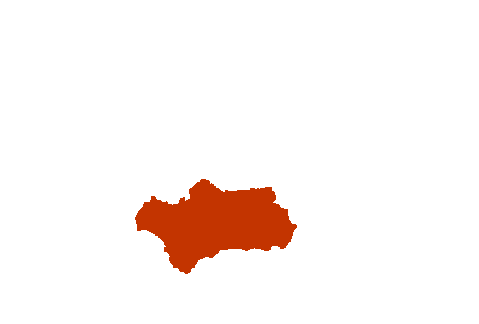



Andalucía Aragón Asturias, Principado de Balears, Illes Canarias Cantabria Castilla y León Castilla-La Mancha Cataluña Ciudad de Ceuta Ciudad de Melilla Comunitat Valenciana Extremadura Galicia Madrid, Comunidad de Murcia, Región de Navarra, Comunidad Foral de País Vasco Rioja, La
Legal and/or technical references
-
DG GROW European Commission by sector

-
EU product standards

-
Blue Guide

-
Harmonised standards

-
Regulation (EU) No 1025/2012 of the European Parliament and of the Council of 25 October 2012 on European standardisation, amending Council Directives 89/686/EEC and 93/15/EEC and Directives 94/9/EC, 94/25/EC, 95/16/EC, 97/23/EC, 98/34/EC, 2004/22/EC, 2007/23/EC, 2009/23/EC and 2009/105/EC of the European Parliament and of the Council and repealing Council Decision 87/95/EEC and Decision No 1673/2006/EC of the European Parliament and of the Council

-
Regulation (EU) 2019/1020 of the European Parliament and of the Council of 20 June 2019 on market surveillance and compliance of products and amending Directive 2004/42/EC and Regulations (EC) No 765/2008 and (EU) No 305/2011

-
Decision No 768/2008/EC of the European Parliament and of the Council of 9 July 2008 on a common framework for the marketing of products, and repealing Council Decision 93/465/EEC

-
Regulation (EU) 2023/988 of the European Parliament and of the Council of 10 May 2023 on general product safety, amending Regulation (EU) No 1025/2012 of the European Parliament and of the Council and Directive (EU) 2020/1828 of the European Parliament and the Council, and repealing Directive 2001/95/EC of the European Parliament and of the Council and Council Directive 87/357/EEC






